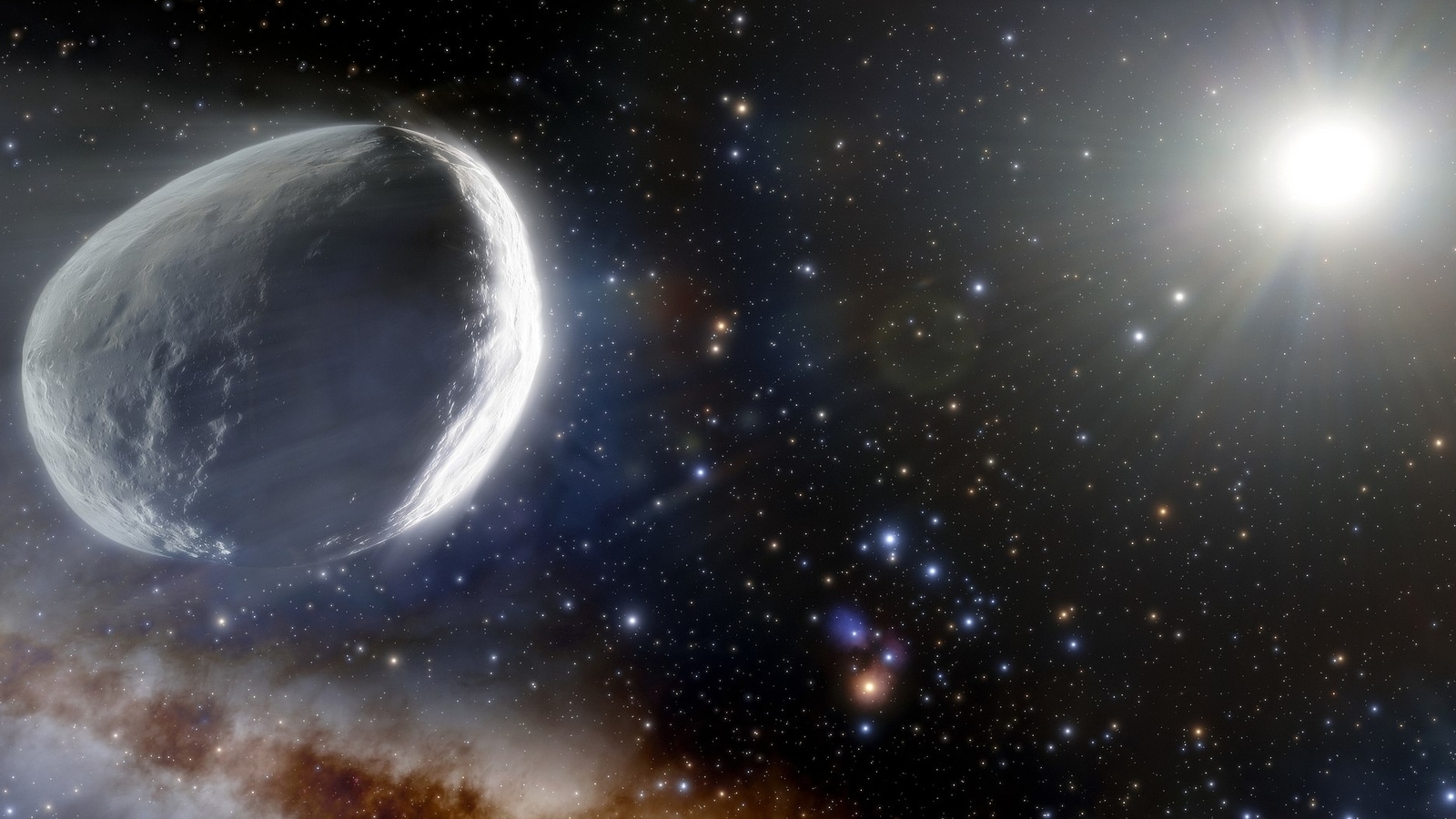NASA: Largest comet ever spotted is heading for Earth, it is as large as a dwarf PLANET
NASA: Astronomers have spotted the largest comet ever. The comet, as big as a dwarf planet, is headed towards the Earth. Find out why scientists are observing it carefully
NASA: The universe is filled with spectacular mysteries and astronomers have found yet another one to puzzle everyone’s mind. Recently an interstellar comet has been discovered and it is the largest one ever discovered. But not only is its size surprising but also how old it is. The ancient comet is expected to be at least 4 billion years old. That means, the comet is almost as old as our Earth. But the piece of information that makes this comet truly scary is that it is headed towards Earth. So, how likely is a comet strike on the Earth? And what makes this comet so intriguing to the scientists? Read on to find out.
The comet, named C/2014 UN271, or Bernardinelli-Bernstein (BB) after the discoverers Pedro Bernardinelli and Gary Bernstein, was first spotted in October 2014. Right now the comet is traveling through the Oort cloud and is moving towards the Sun at an extremely high speed of 35,000 km/h. The comet is estimated to be around 128 kilometers wide, making it the largest comet ever spotted.
The largest comet ever is headed towards the Earth
66 million years ago, the asteroid that made dinosaurs go extinct and brought on an ice age was about 10 kilometers wide. In comparison, if BB comet were to strike the Earth at its speed, the entire planet would explode without another chance for newer species to come again. The Earth as we know it would cease to exist. However, according to current projections by NASA, the comet is about to miss our planet by a humble distance of 1 billion miles when it makes the closest approach in 2031. For reference, that distance is greater than the distance between the Earth and Neptune.
However, these are current projections and the comet can change its direction anytime and that is why it is incredibly crucial for scientists to constantly observe it. The risk of a strike is not the only motivation for scientists.
What lies at the heart of the dwarf planet-sized comet
With the BB comet moving closer to the Earth, astronomers are using this opportunity to observe and understand the structure and nature of the icy space rock. The NASA Hubble Space Telescope is being used to observe the nucleus of the comet and scientists have found that the nucleus is about 50 times larger than typical comets observed in the inner solar system. Not only that, but apparently the color of the nucleus has also puzzled astronomers. It’s big and it’s blacker than coal,” David Jewitt, a planetary science professor at UCLA said.
Scientists expect to find the presence of rare minerals and information about the early days of the universe. By observing the comet, scientists also intend to understand what the core of the Earth could possibly be made up of.
For all the latest Technology News Click Here

